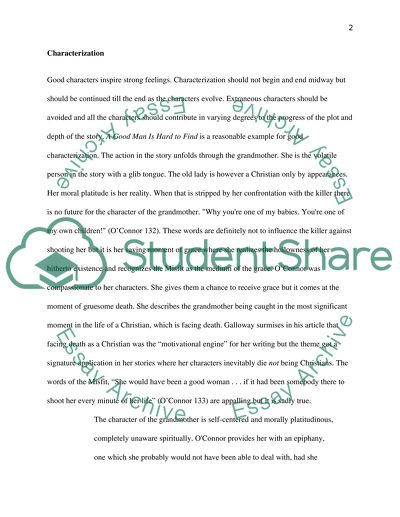Cite this document
(“Literary analysis on A Good Man Is Hard To Find by Flannery O'Conner Research Paper”, n.d.)
Retrieved from https://studentshare.org/miscellaneous/1560122-literary-analysis-on-a-good-man-is-hard-to-find-by-flannery-oconner
Retrieved from https://studentshare.org/miscellaneous/1560122-literary-analysis-on-a-good-man-is-hard-to-find-by-flannery-oconner
(Literary Analysis on A Good Man Is Hard To Find by Flannery O'Conner Research Paper)
https://studentshare.org/miscellaneous/1560122-literary-analysis-on-a-good-man-is-hard-to-find-by-flannery-oconner.
https://studentshare.org/miscellaneous/1560122-literary-analysis-on-a-good-man-is-hard-to-find-by-flannery-oconner.
“Literary Analysis on A Good Man Is Hard To Find by Flannery O'Conner Research Paper”, n.d. https://studentshare.org/miscellaneous/1560122-literary-analysis-on-a-good-man-is-hard-to-find-by-flannery-oconner.


